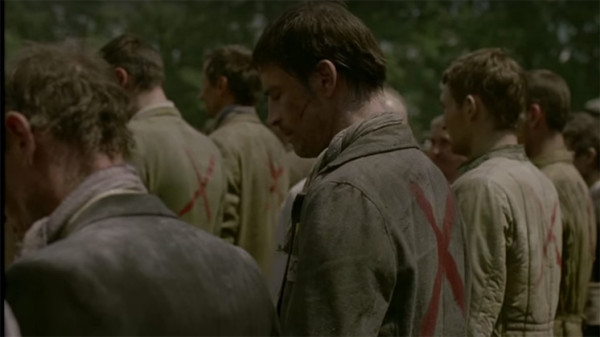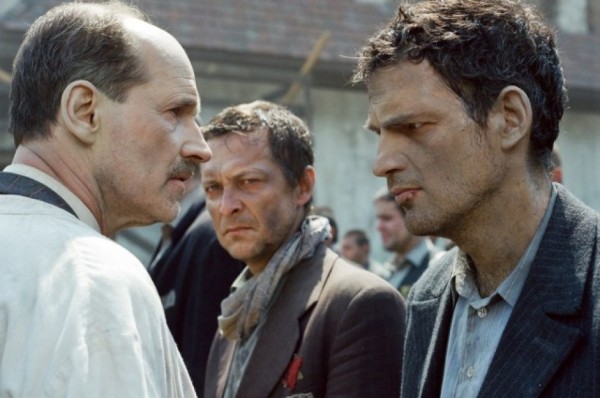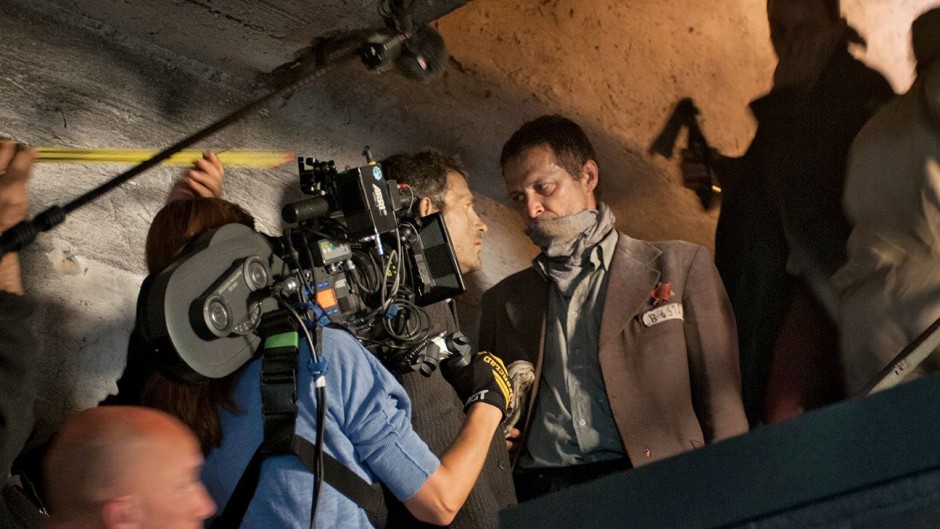Amid the unspeakable inferno of Auschwitz-Birkenau, the Nazi extermination camp in Poland, a Hungarian Jewish forced laborer named Saul watches impassively as a new transport of Jews from Hungary rumbles in ominously.
It’s the spring of 1944 and the Holocaust is in full swing.
Hundreds of thousands of Jews in German-occupied Hungary have been singled out for death, and Poland will be their graveyard. Saul, a member of a sonderkommando unit, is responsible for herding Jews into gas chambers, sorting their clothes and possessions, burning their corpses in crematoria and disposing of their ashes.
In the first scene of Laszlo Nemes’ gritty film, Son of Saul, which opens in Canadian theaters on December 25, Saul (Geza Rohrig), his face smudged with the soot of burning fires consuming Jews, greets the newest batch of arrivals with a finely-honed sense of detachment.

Son of Saul unfolds in German, Hungarian and Yiddish and clinically depicts the industrial scale murder of Jews through Saul’s perspective. Not since The Grey Zone (2001) has a feature film portrayed the Holocaust in such a distanced fashion. In keeping with its cool mood, the victims remain completely anonymous, nameless Jews who disappear into the clanging Nazi killing machine.
To the sonderkommandos, they’re “pieces” to be processed. To the Germans in the camp, they’ve been stripped of their humanity and consigned to special “treatment.”
Saul, a cipher, assures the unknowing Jews they’ll be fed following their shower. After they’re led into the gas chamber, they bang insistently on the door and shout hysterically in unison. The clamor has no effect on Saul, so inured is he to this callous process of sudden death. But like every sonderkommando, he realizes that his days are numbered. The Nazis murder their teams of sonderkommandos every few months. Permanent positions do not exist.
The film largely unfolds in the semi-darkness of the bleak center where Jews — men and women — draw their last breath before death devours them. The bodies are stacked like cordwood in the gas chamber. Once they’ve been removed, the sonderkommandos scrub the blood and gore off the floors and search for valuables left behind in clothes. Toiling amid appalling conditions, their German overseers shout “faster” and “work.”
Miraculously, a boy survives the gassing, his chest wheezing before an SS man puts him out of his misery. Recognizing the boy as his son, Saul wants to give him a proper Jewish burial, but he needs to find a rabbi to chant a prayer for the dead. This quest becomes an obsession, even as he and the other sonderkommandos learn they’ve been selected to be shot.
In a desperate attempt to alert the civilized world of the atrocities taking place in the camp, the sonderkommandos decide to document Nazi crimes through photography. Saul asks a prisoner to take photographs of bodies being burned in open pits. The camera is hidden in a drain pipe, away from prying eyes.
As the film proceeds, Saul is put to work shovelling human ashes into a river and firing up a crematorium with coal. Amid the degradation, an SS officer mocks shtetl Jews.

Realizing they’re extremely expendable, the sonderkommados amass weapons for a daring escape. When Saul inexplicably loses a pouch of gunpowder the escapees will need, a Russian prisoner-of-war curses him as a “stupid Jew.”
Amid the bedlam of shots, machine gun fire and smoke, the sonderkommandos make a break for freedom. Saul joins them, the lifeless body of his son covered in a blanket and draped over his shoulder.
Can they elude the Germans? Can Saul finally bury his son? These questions haunt Son of Saul.
